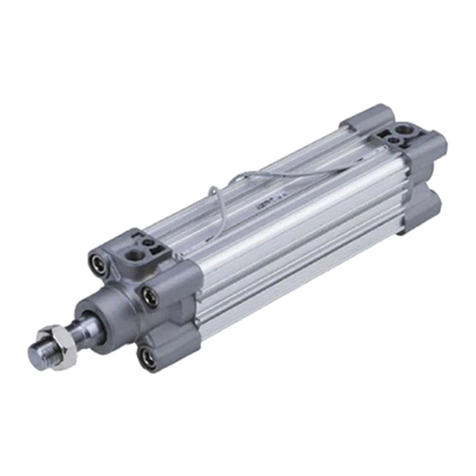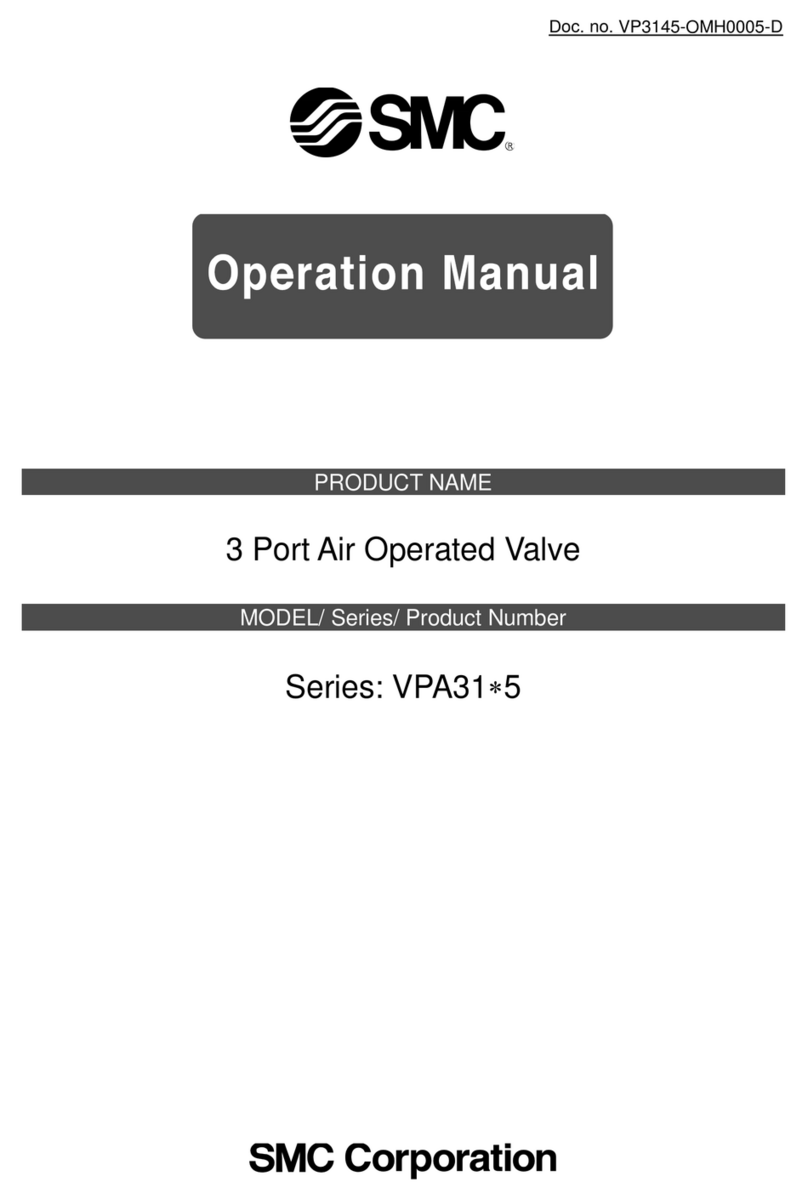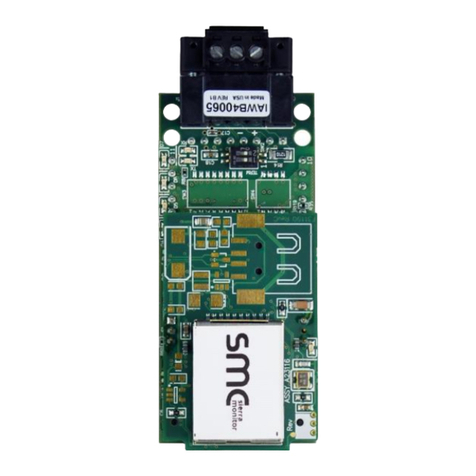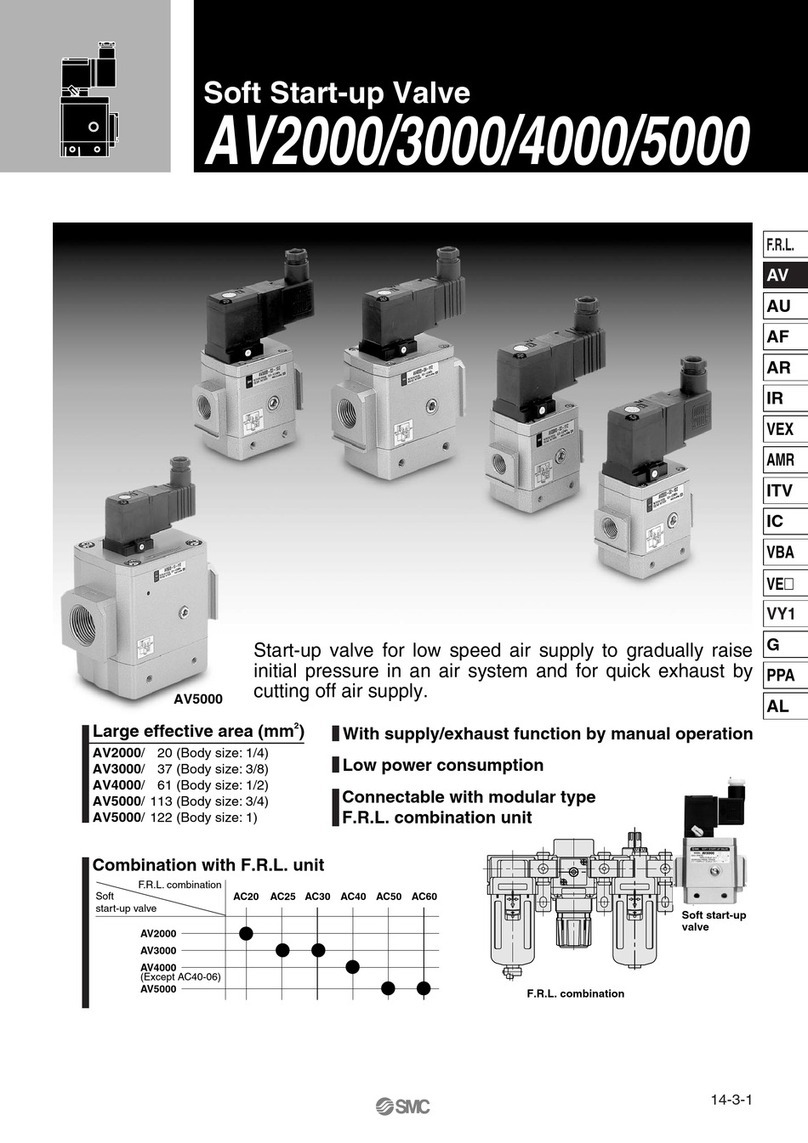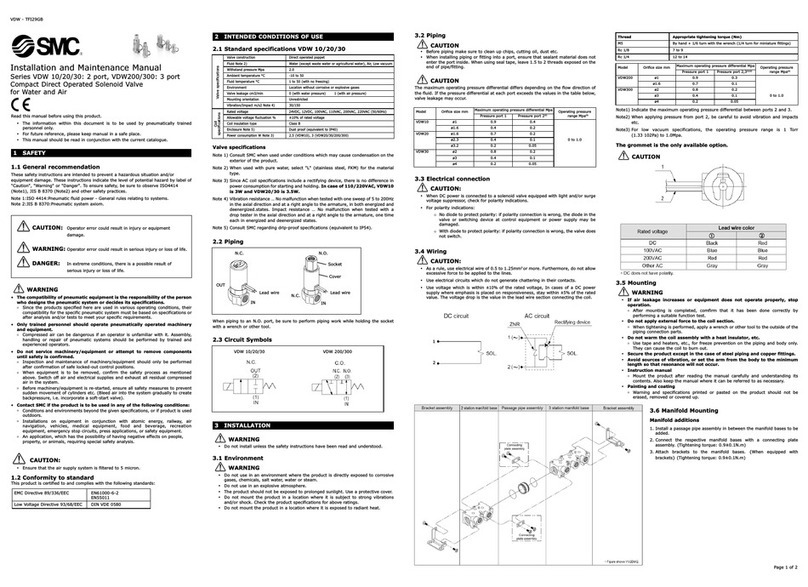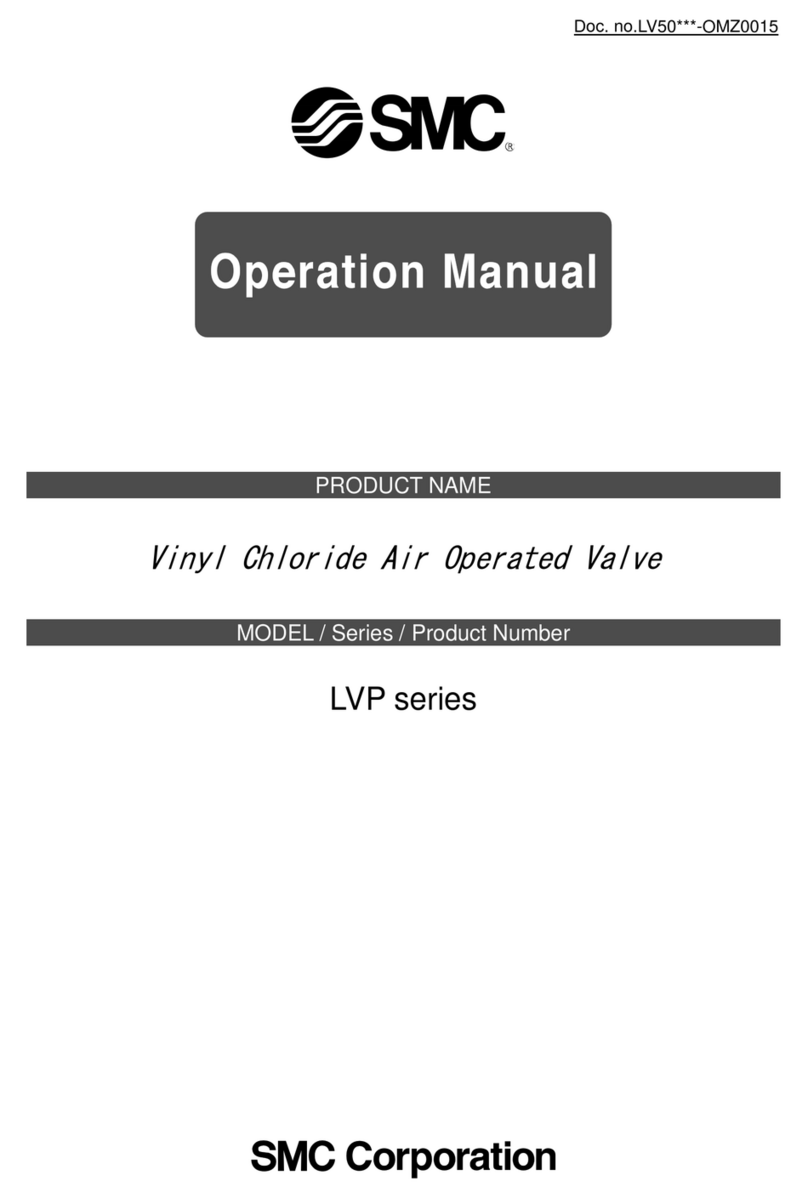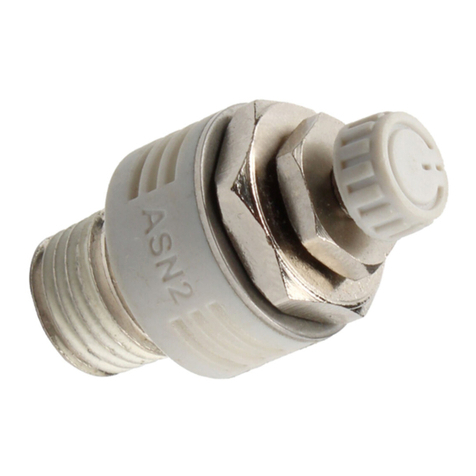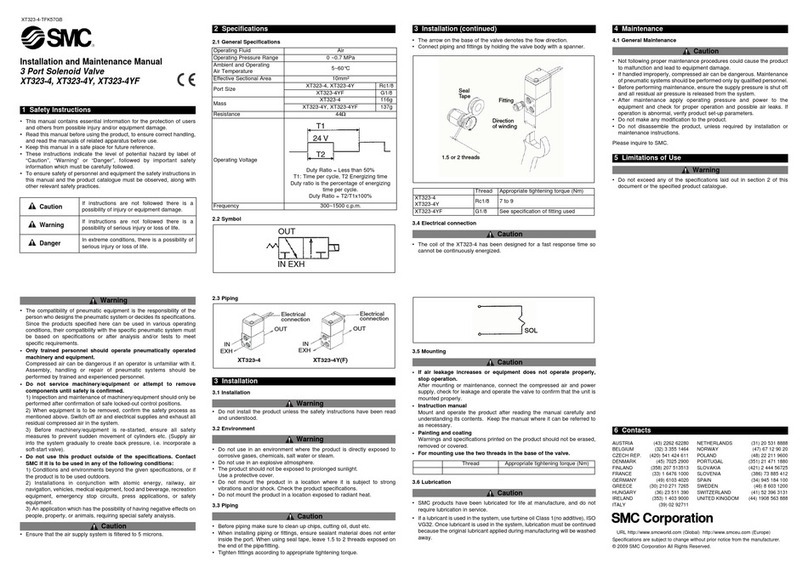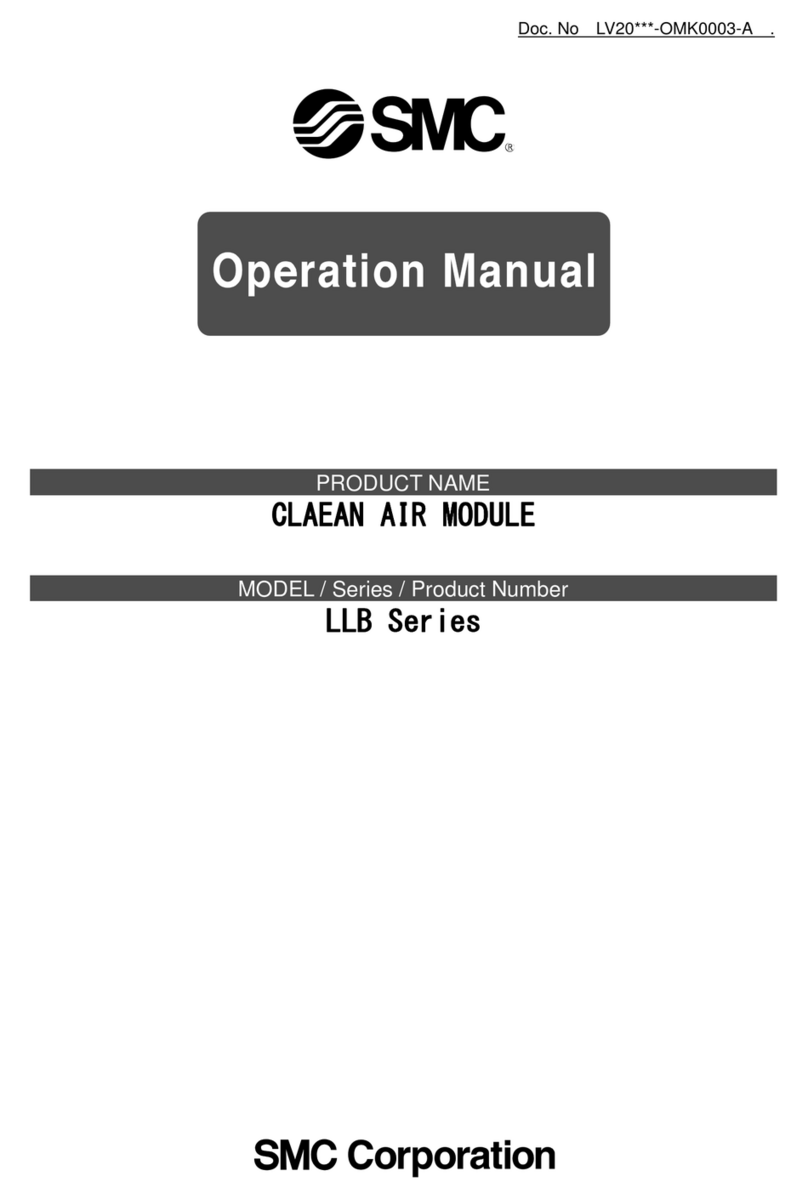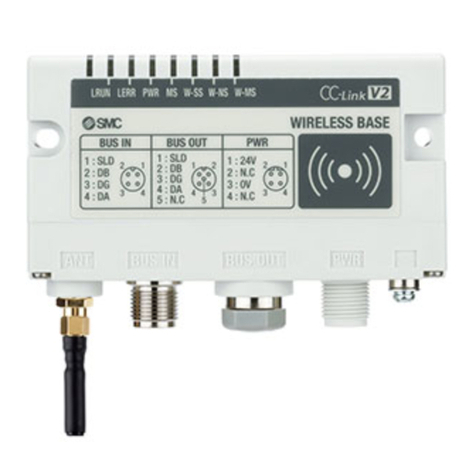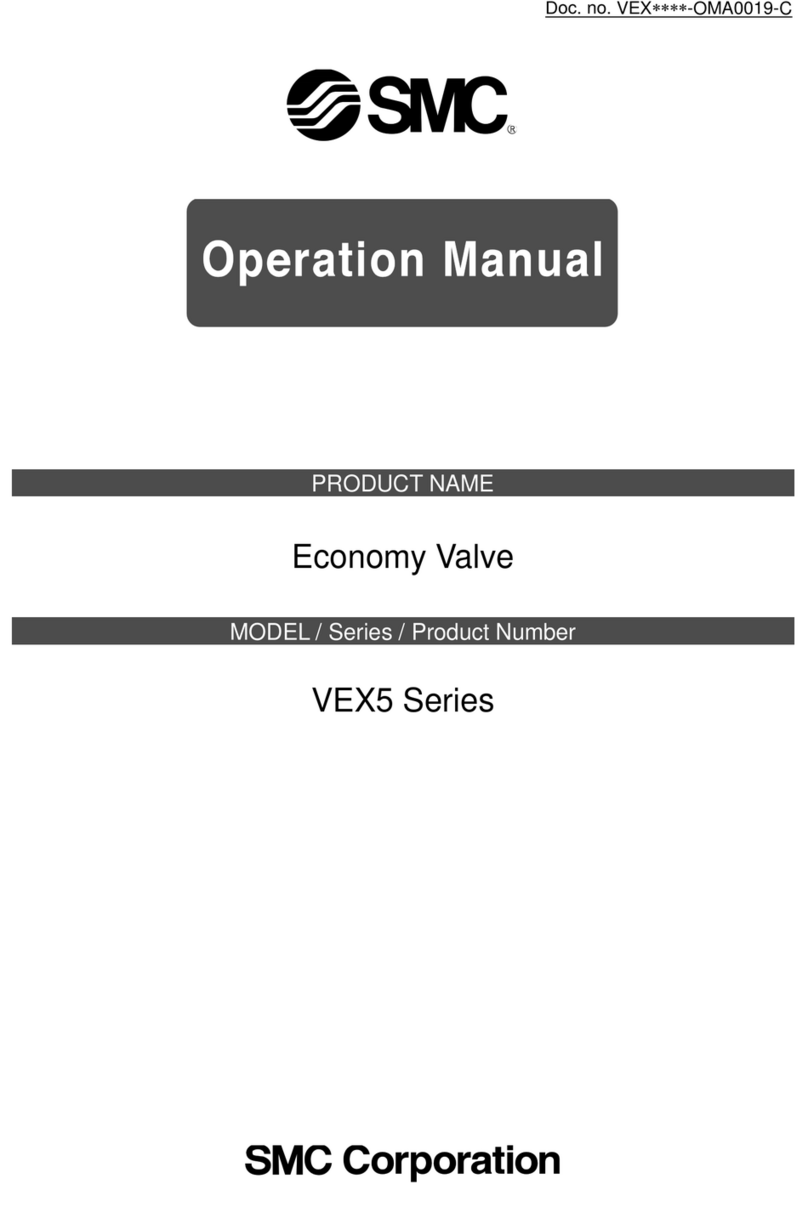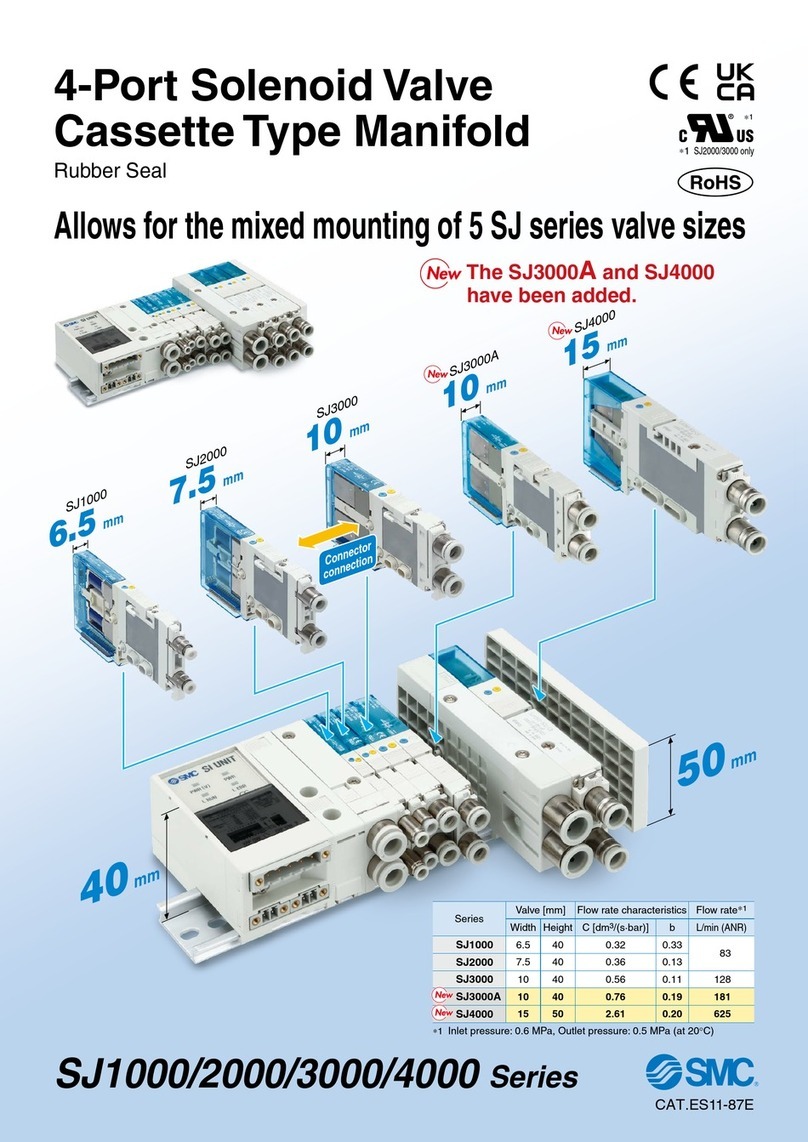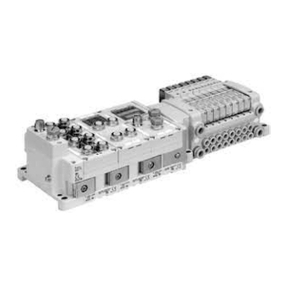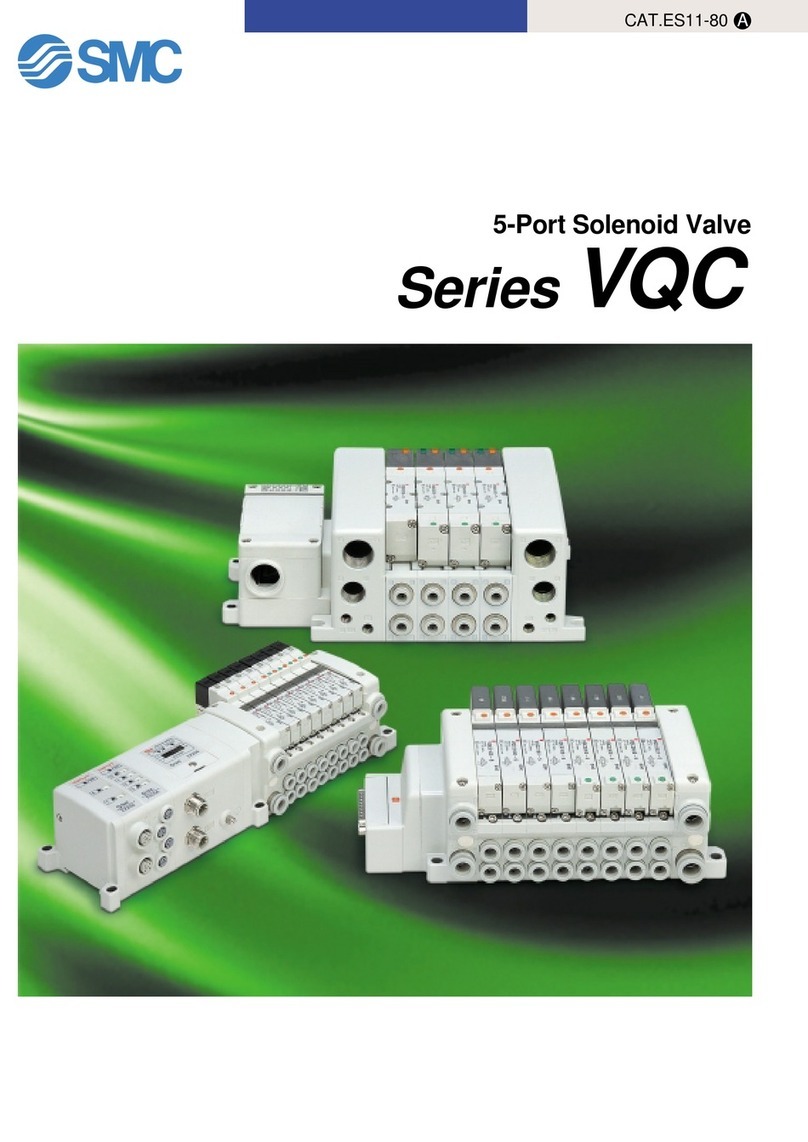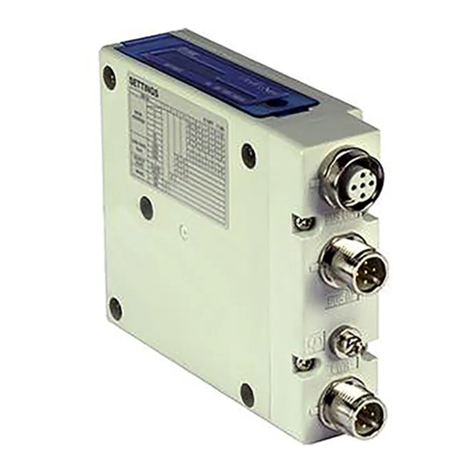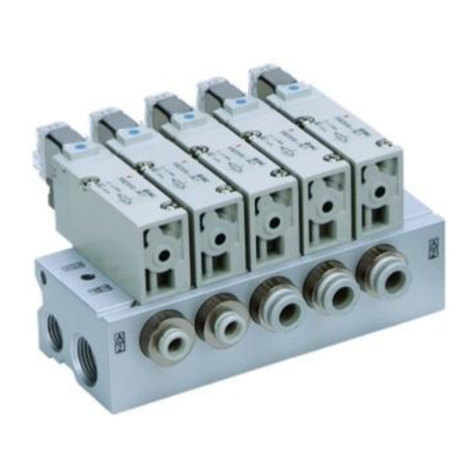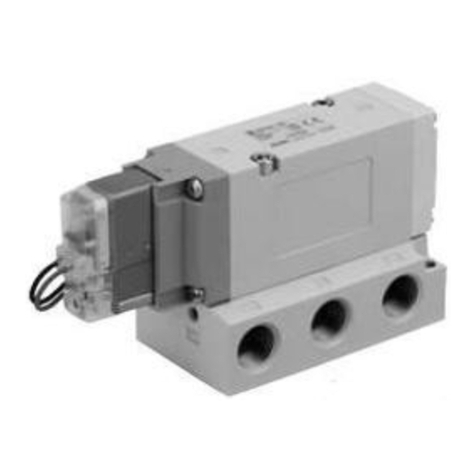
- 6 -
SJ3000-OMM0001
Air Supply
1.
Type of fluids
Please consult with SMC when using the product in applications
other than compressed air.
2.
When there is a large amount of drainage.
Compressed air containing a large amount of drainage can
cause malfunction of pneumatic equipment. An air dryer or
water separator should be installed upstream from filters.
3.
Drain flushing
If condensation in the drain bowl is not emptied on a regular
basis, the bowl will overflow and allow the condensation to enter
the compressed air lines. It causes malfunction of pneumatic
equipment.
If the drain bowl is difficult to check and remove, installation of a
drain bowl with an auto drain option is recommended.
For compressed air quality, refer to SMC’s Best Pneumatics
catalog.
4.
Use clean air.
Do not use compressed air that contains chemicals, synthetic
oils including organic solvents, salt or corrosive gases, etc., as it
can cause damage or malfunction.
1.
When extremely dry air is used as the fluid,
degradation of the lu rication properties in side the
equipment may occur, resulting in reduced relia ility
(or reduced service life) of the equipment. Please
consult with SMC.
2.
Install an air filter.
Install an air filter upstream near the valve. Select an air filter
with a filtration size of 5 ㎛ or smaller.
3.
Take measures to ensure air quality, such as y
installing an aftercooler, air dryer, or water separator.
Compressed air that contains a large amount of drainage can
cause malfunction of pneumatic equipment such as valves.
Therefore, take appropriate measures to ensure air quality,
such as by providing an aftercooler, air dryer, or water
separator.
4.
If excessive car on powder is seen, install a mist
separator on the upstream side of the valve.
If excessive carbon dust is generated by the compressor, it may
adhere to the inside of a valve and cause it to malfunction.
For compressed air quality, refer to SMC’s Best Pneumatics
catalog.
Operating Environment
1. Do not use in an atmosphere having corrosive gases,
chemicals, sea water, water, water steam, or where
there is direct contact with any of these.
2. Do not use in an environment where flamma le gas
or explosive gas exists. Usage may cause a fire or
explosion. The products do not have an explosion
proof construction.
3. Do not use in a place su ject to heavy vi ration
and/or shock.
4. The valve should not e exposed to prolonged
sunlight. Use a protective cover.
5. Remove any sources of excessive heat.
6. If it is used in an environment where there is
possi le contact with oil, weld spatter, etc., exercise
preventive measures.
7. When the solenoid valve is mounted in a control
panel or its energized for a long time, make sure
am ient temperatures is within the specification of
the valve.
Maintenance
1. Perform maintenance inspection according to the
procedures indicated in the operation manual.
If handled improperly, malfunction and damage of machinery or
equipment may occur.
2. Removal of equipment, and supply/exhaust of
compressed air
When components are removed, first confirm that measures
are in place to prevent workpieces from dropping, run-away
equipment, etc. Then, cut off the supply pressure and electric
power, and exhaust all compressed air from the system using
the residual pressure release function.
When the equipment is operated after remounting or
replacement, first confirm that measures are in place to prevent
lurching of actuators, etc. Then, confirm that the equipment is
operating normally.
3. Low frequency operation
Valves should be operated at least once every 30 days to
prevent malfunction. (Use caution regarding the air supply.
4. Manual override
When the manual override is operated, connected equipment
will be actuated.
Operate after safety is confirmed.
5. Maintenance work
If handled improperly, compressed air can be dangerous.
Assembly, handling, repair and element replacement of
pneumatic systems should be performed by a knowledgeable
and experienced person.
6. Clean suction filters and silencers on a regular asis.
The performance of an ejector will deteriorate due to clogged filters
and silencers. High flow filters should be used, especially in dusty
locations.
1. Drain flushing
Remove drainage from the air filters regularly.
2. Lu rication
In the case of rubber seals, once lubrication has been started, it
must be continued.
Use class 1 turbine oil (with no additive , ISO VG32 because if
other lubricant oil is used, it may cause malfunction. Please
contact SMC for suggested class 2 turbine oil (with additive ,
ISOVG32.
Warning
SJ3A6 Series
Precautions for 3 Position 3 Port Solenoid Valve
③
③③
③
Be sure to read efore handling.
Warning
Caution
Caution
Warning
